New threat to the ozone layer
12 October 2017
Have you ever heard of the hole in the ozone layer? Your parents and teachers might remember that, back in the 1980s, there was a lot of talk about chemicals called CFCs (also known as freons in some countries) that were used in fridges, air conditioners and sprays. It was discovered that they damage the ozone layer: in parts, the layer gets so thin that it looks like it has a hole in it. The ozone-gas shield in the Earth’s atmosphere protects us from receiving too much dangerous ultraviolet (UV) radiation from the Sun, which can cause sunburns and even skin cancer. Governments around the world recognised it was important to protect it so, thirty years ago, the Montreal Protocol was agreed to stop emissions of CFCs and other chemicals known to be hurting the ozone layer. The layer is now recovering and the ‘hole’ in it slowly closing. However, a new international study led by scientist David Oram from the University of East Anglia in the UK, has now discovered a new threat to the ozone layer. The team have found that some countries in East Asia, such as China, are increasingly emitting chemicals, called dichloromethane and dichloroethane, which are not included in the Montreal Protocol but can affect the ozone layer. Governments and scientists thought that these chemicals couldn’t travel to the ozone layer in high enough amounts to be damaging, hence why they were not included in the Protocol. But the new study, published in the EGU journal Atmospheric Chemistry and Physics, shows that the substances are becoming a danger to the layer. Not only are they being emitted in increasing amounts, but they are being emitted near regions where winds can carry them up to the ozone layer. This is where they can cause damage and threaten the recovery of the layer. The scientists say their results highlight a gap in the Montreal Protocol, and that these missing chemicals may need to be included in it.Find out more
Discuss with your teacher or parents
What is the ozone layer? How high-up in the atmosphere is it?
How thick is the ozone layer?
Why was the Montreal Protocol so important?
Where is the ozone ‘hole’ located?
Find out more about the ozone layer and why it is important to protect it in this video by Mocomi Kids egu.eu/1NPHQB.
Print version
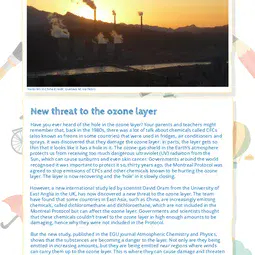
This is a kids' version of the EGU article: 'New threat to the ozone layer'. It was written by Bárbara Ferreira (EGU Media and Communications Manager), reviewed for scientific content by Kirsty Pringle (Institute for Climate and Atmospheric Science, University of Leeds, UK) and Sarah Connors (Science Officer, Working Group 1 Technical Support Unit, Intergovernmental Panel on Climate Change [IPCC]), and for educational content by Marina Drndarski (Biology teacher, Primary school Drinka Pavlovic, Belgrade, Serbia).
Translations
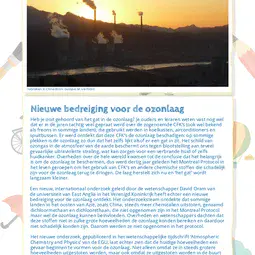
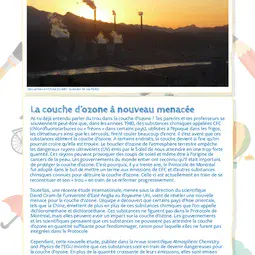
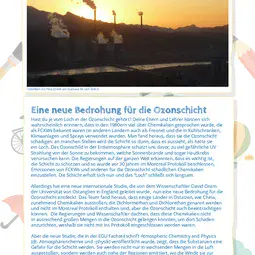
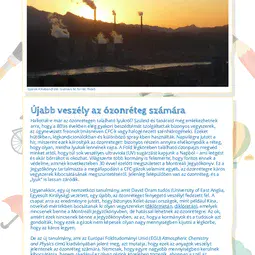
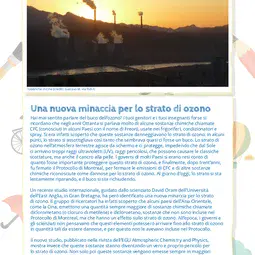
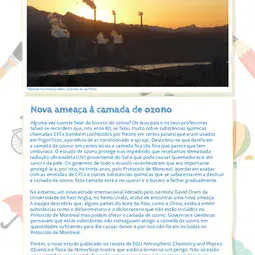
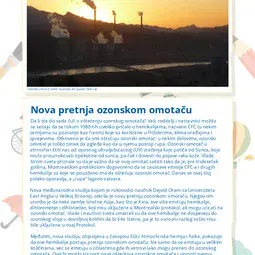
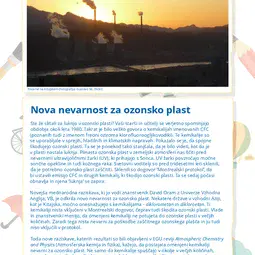
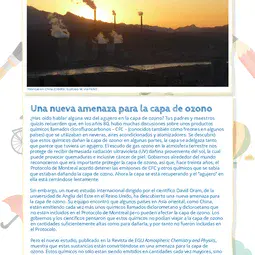
All English-language Planet Press releases are carefully edited, reviewed and proofed, by scientists, educators and EGU staff. Please note that once translated, Planet Press releases receive no further checks from EGU staff. For this reason, we cannot guarantee their accuracy, though we trust the quality of our voluntary translators and are grateful for their work.

